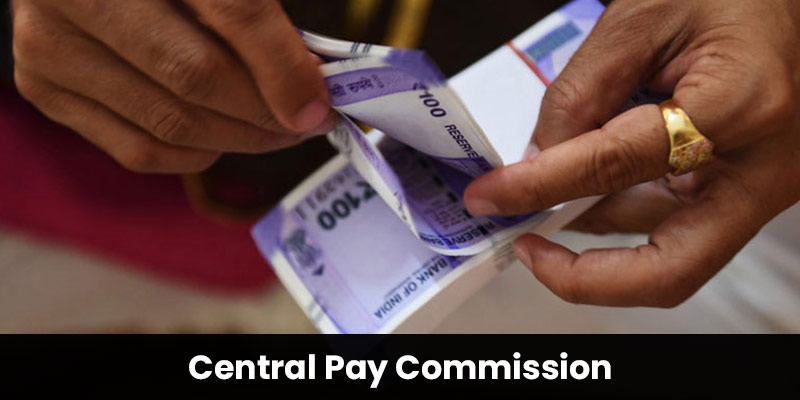- India
- Jan 18
Explainer - What is the purpose of Central Pay Commission?
• The Union Cabinet, led by Prime Minister Narendra Modi, approved the formation of the 8th Pay Commission on January 16.
• It will be set up to revise salaries of nearly 50 lakh central government employees and allowances of 65 lakh pensioners.
• The chairman and two members of the Commission will be appointed soon.
• The term of the 7th Pay Commission will end in 2026.
• The 7th Pay Commission was constituted in 2014 and its recommendations were implemented on January 1, 2016.
• The 7th pay commission saw an expenditure increase of Rs 1 lakh crore for fiscal 2016-17.
• As the 7th Pay Commission’s term concludes in 2026, initiating the process in 2025 ensures sufficient time to receive and review recommendations before its completion.
• The new Pay Commission in 2025 will ensure that its recommendations are received well before the completion of the term of the seventh pay panel.
What is the purpose of Central Pay Commission?
• The Department of Expenditure, under the Ministry of Finance, is the nodal department for overseeing the public financial management system in the central government and matters connected with state finances.
• It is responsible for the implementation of the recommendations of the Finance Commission and Central Pay Commission, monitoring of audit comments/observations, preparation of Central Government Accounts.
• Central Pay Commissions are periodically constituted to examine various issues such as pay and allowances, retirement benefits, conditions of service, promotion policies, etc of the central government employees.
• There is no stipulation regarding any specific time period for constitution of a pay commission for central government employees.
• The government of India has, from time to time, set up various pay commissions for improving the pay structure of its employees so that they can attract better talent to public service.
• In this 21st century, the global economy has undergone a vast change and it has seriously impacted the living conditions of the salaried class.
• The economic value of the salaries paid to them earlier has diminished.
• Therefore, to keep the salary structure of the employees viable, it has become necessary to improve the pay structure of their employees.
• Since 1947, seven Pay Commissions have been constituted, with the last one implemented in 2016.
• Pay commissions hold extensive consultations with central and state governments and other stakeholders before giving recommendations to the government.
• The pay commission has a key role in deciding salary structures, benefits and allowances for government employees. Most of the state-owned organisations follow the commission’s recommendations.
• Implementation of the pay panel’s recommendations provides a significant boost to consumption and economic growth, along with improved quality of life for government employees.
• Usually, every 10 years, the central government constitutes a pay commission to revise the remuneration of its employees.
• The pay commission also recommends the formula for the revision of dearness allowance and dearness relief for central government employees and pensioners with a view to compensating them for inflation.
• Several state governments also revise the remuneration of their employees on the lines of the central pay commission.
Previous pay commissions in India
1) 1st Pay Commission (May 1946-May 1947)
Chairman: Srinivasa Varadachariar
• Focused on rationalising the pay structure after India's independence
• Introduced the concept of “the living wage”.
• Minimum salary: Rs 55/month; maximum salary: Rs 2,000/month.
• Beneficiaries: Around 1.5 million employees.
2) 2nd Pay Commission (August 1957-August 1959)
• Chairman: Jaganath Das
• Focused on balancing the economy and living cost.
• Recommended the minimum wage of Rs 80/month.
• Introduced the ‘socialistic pattern of society’.
• Beneficiaries: Approximately 2.5 million employees.
3) 3rd Pay Commission (April 1970-March 1973)
• Chairman: Raghubir Dayal
• Recommended minimum pay of Rs 185/month.
• Emphasized salary parity between public and private sectors.
• Addressed inequalities in the pay structure.
• Beneficiaries: About 3 million employees.
4) 4th Pay Commission (September 1983-December 1986)
• Chairman: P.N. Singhal
• Recommended a minimum salary of Rs 750/month.
• Focused on reducing disparities in salaries across rank.
• Introduced a performance-linked pay structure
• Beneficiaries: Over 3.5 million employees
5) 5th Pay Commission (April 1994 - January 1997)
• Chairman: Justice S. Ratnavel Pandian
• Recommended a minimum pay of Rs 2,550/month.
• Suggested reducing the number of pay scale.
• Focused on modernising government office.
• Beneficiaries: Around 4 million employees.
6) 6th Pay Commission (October 2006-March 2008)
• Chairman: Justice B.N. Srikrishna
• Introduced pay bands and grade pay.
• Minimum salary: Rs 7,000/month; maximum salary: Rs 80,000/month.
• Emphasized performance-related incentive.
• Beneficiaries: Nearly 6 million employees.
7) 7th Pay Commission (February 2014 - November 2016)
• Chairman: Justice A.K. Mathur
• Minimum pay raised to Rs 18,000/month; maximum pay Rs 2,50,000/month.
• Recommended a new pay matrix instead of grade pay system.
• Focused on allowances and work-life balance.
• Beneficiaries: Over 10 million (including pensioners).
Manorama Yearbook app is now available on Google Play Store and iOS App Store

